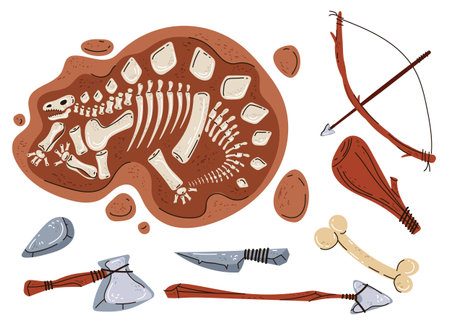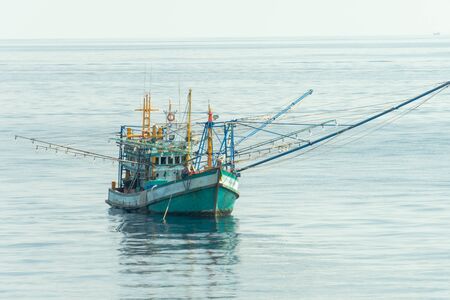Traditional Indian Fishing Gear and Techniques
Across the diverse rivers, backwaters, and coasts of India, fishing has long been woven into the fabric of rural life. Traditional fishermen, often referred to as “machhuaars” in Hindi or “meenkaran” in Tamil, have developed unique methods and tools tailored to local waters and fish species. Among the most iconic indigenous equipment is the cast net, locally known as jal, expertly thrown in a circular motion to trap fish in shallow waters. Another widely used tool is the bamboo fish trap, called chepa or vallam in various regions, ingeniously designed to lure and hold fish using natural bait. Country boats, crafted from native wood and sometimes even hollowed-out logs, are still a common sight along the Ganges, Godavari, Kerala’s backwaters, and coastal stretches of Odisha and Bengal. These boats enable fishermen to navigate intricate water channels with ease. The synergy between traditional gear and time-tested techniques not only reflects deep ecological knowledge but also sustains livelihoods for countless Indian families who continue to respect seasonal rhythms, local customs, and conservation wisdom passed down through generations.
Modern Innovations and Adaptations in Indian Fisheries
India’s fishing communities have witnessed remarkable transformation in recent decades, especially with the introduction of new materials and technology. Traditionally, fishermen along India’s coasts and rivers relied on hand-woven cotton nets, wooden catamarans, and age-old techniques handed down through generations. However, today’s scene is a unique blend of modern innovation and traditional wisdom, reflecting both global trends and local ingenuity.
The Rise of Nylon Nets
The switch from organic fibres to nylon has been one of the most significant changes. Nylon nets are stronger, more durable, and require less maintenance compared to cotton or jute. Indian fishermen from Kerala to West Bengal now widely prefer nylon for its ability to withstand rough waters and its resistance to rotting in humid conditions. Older fishermen often recall how patching up torn cotton nets used to be a daily chore—something younger generations rarely need to worry about now.
Mechanized Boats: Speed and Scale
The move from manual rowboats and sail-powered vessels to diesel-engine mechanized boats has expanded fishing grounds far beyond the shoreline. Mechanized boats, or “trawlers” as called locally, allow deeper sea excursions and larger hauls, reducing physical strain while increasing efficiency. Fishermen in Andhra Pradesh or Gujarat often speak about how these boats enable them to return quickly with fresh catch, improving both quantity and quality.
Echo-Sounders & Modern Navigation
Another leap forward is the use of echo-sounders and GPS navigation systems. Echo-sounders help fishermen locate fish shoals by detecting underwater objects using sound waves—a far cry from the days when elders relied on reading water currents or bird movements. While some older crew members still trust their experience over gadgets, younger fishermen are quick to adapt, using smartphones to track weather updates or share information on best fishing spots via WhatsApp groups.
Blending Tradition with Technology: A Comparative Table
| Traditional Practice | Modern Innovation | Local Insight/Adaptation |
|---|---|---|
| Cotton nets repaired by hand | Nylon nets with minimal maintenance | Some coastal villages dye nylon nets with natural colours for camouflage |
| Wooden rowboats/catamarans | Mechanized trawlers & fibre boats | Many fishermen use hybrid methods—motorized country boats for shallow waters |
| Reading nature signs (birds, tides) | Echo-sounders & GPS devices | Younger crews combine digital data with elders’ advice for better results |
This ongoing evolution showcases how Indian fishermen are not just passive recipients of technological change but active adapters who blend old knowledge with new tools. Whether it’s mending a net or plotting a course into deeper waters, the spirit of jugaad—Indian ingenuity—remains alive on every boat.

3. Choosing the Right Gear for Different Indian Waters
India’s diverse water bodies require unique fishing approaches and carefully chosen gear. Whether you are casting in the mighty Ganga, battling the currents of Brahmaputra, exploring serene lakes, or venturing into estuaries and marine coasts, understanding local conditions and fish behaviour is crucial.
Rivers: Ganga & Brahmaputra
The Ganga and Brahmaputra host iconic species like mahseer, catla, rohu, and hilsa. For these fast-flowing rivers, sturdy fibreglass rods (8-10 feet) paired with high-capacity spinning reels are preferred. Seasoned Indian fishermen suggest using nylon monofilament lines (15-25 lbs) to handle strong currents and large fish. Locally popular baits include kneaded atta dough, live worms, and pieces of freshwater shrimp. Weighted sinkers help keep bait steady in turbulent waters.
Lakes: Dal, Vembanad & More
Lakes across India offer calmer environments but can be deep with dense vegetation. Here, medium-action rods (6-7 feet) and smaller reels work well for species like murrel, tilapia, and carp. Go for lighter lines (8-12 lbs) to avoid spooking fish in clear water. Floating bobbers or traditional banana leaf floats are effective for surface fishing. Dough balls mixed with mustard oil or groundnut cake are popular local bait choices.
Estuaries: Sundarbans & Godavari Delta
Estuarine regions mix saltwater with fresh, supporting species such as mullet, barramundi (Asian sea bass), and prawns. Corrosion-resistant tackle is a must due to brackish water. Use medium-to-heavy rods with braided lines (20+ lbs) for strength and durability. Indian fishermen often rely on prawn or fish chunks as bait—cast netting is also widely used for live bait collection here.
Marine Coasts: Arabian Sea & Bay of Bengal
The vast coastlines demand robust equipment for big-game targets like kingfish, pomfret, and tuna. Heavy-duty surfcasting rods (10-12 feet), large spinning reels, and stainless steel hooks are recommended. Use wire leaders to prevent bite-offs from toothy predators. Lures such as metal spoons or locally crafted wooden poppers work well along rocky shores. In South India, handlining remains popular among artisanal fishermen using locally woven cotton lines.
Practical Takeaways from Local Experts
- Always ask local anglers about seasonal fish activity—timing matters.
- Adapt your bait to what’s naturally available in the region for best results.
- Invest in waterproof gear bags—monsoons can surprise you anywhere in India.
The Bottom Line
Selecting the right gear based on water type, target species, and traditional wisdom ensures both sustainability and satisfaction on your next fishing adventure across India’s vibrant waterways.
4. Techniques Shared by Seasoned Indian Fishermen
India’s diverse landscapes and waterways have shaped a rich tapestry of fishing techniques, each closely tied to its local environment. Veteran fishermen from Kerala’s backwaters, Bengal’s winding rivers, and Gujarat’s coastal stretches generously share their hands-on wisdom—much of it passed down through generations.
Best Times for Fishing
| Region | Peak Fishing Hours | Seasonal Advice |
|---|---|---|
| Kerala | Early Morning (5–8 AM) | Monsoon season brings abundance; avoid peak noon heat. |
| Bengal | Late Afternoon (3–6 PM) | Pre-monsoon months yield best catch in rivers. |
| Gujarat | Dawn & Dusk | Tidal timings crucial on the coast; consult local tide charts. |
Bait Preferences by Region
| Region | Popular Baits |
|---|---|
| Kerala | Prawns, earthworms, rice dough balls |
| Bengal | Mosquito larvae, bread, small fish strips |
| Gujarat | Shrimp, cuttlefish pieces, live crabs for sea fishing |
Knot Styles and Rigging Tips
- Kerala: The “Palomar knot” is highly favoured for its strength when targeting catla and rohu in freshwater lakes. Locals recommend using a double-loop rig for brackish water species.
- Bengal: “Clinch knot” and “Surma bandha” (a traditional slip knot) are common among river fishermen, effective for quick hook changes while casting from riverbanks.
- Gujarat: Coastal fishers use the “Uni knot” for sea rigs due to its reliability with thick lines needed for larger marine species like pomfret or mackerel.
Local Pro-Tips from the Experts
- In Kerala, always watch the moon phase; many swear by full moon nights for catching pearl spot.
- Bengali fishermen often float their bait slightly off the riverbed to attract bottom-feeding carp during the cooler months.
- Gujarat’s experts stress patience and timing with tides, using native grass as camouflaged floats in shallow estuaries.
Cultural Wisdom Embedded in Technique
The evolution of these techniques is inseparable from regional customs—Kerala’s fishers still chant prayers before casting nets, Bengali families gather at riversides for communal catches, while Gujaratis celebrate bumper hauls during monsoon festivals. These shared methods not only improve your catch but also offer a genuine taste of India’s fishing heritage.
5. Sustainable Practices and Traditions
Community-Driven Conservation Efforts
Indian fishermen have long relied on a blend of tradition and practical wisdom to ensure the sustainability of their fisheries. Across coastal states like Kerala, Maharashtra, West Bengal, and Tamil Nadu, communities recognise that maintaining healthy fish stocks is vital for future generations as well as their own livelihoods.
The Monsoon Fishing Ban: A Seasonal Pause
One prominent example is the seasonal fishing ban during the monsoon months, typically from June to August. This government-mandated practice is widely respected by local fishing communities. The monsoon ban allows marine ecosystems time to regenerate and ensures that breeding cycles for key species such as Hilsa and Indian Mackerel are not disrupted. Fishermen from coastal villages often use this time for boat repairs, net mending, and community events, keeping alive both tradition and environmental stewardship.
Selective Netting and Gear Restrictions
Traditional Indian fishermen prefer selective netting techniques such as using larger mesh sizes in gill nets or cast nets. This allows juvenile fish to escape while only catching mature individuals ready for market. Such practices help maintain fish populations and support biodiversity in rivers like the Ganges or estuaries along the Konkan coast. Many communities also voluntarily limit the use of mechanised trawlers or destructive gear, prioritising traditional catamarans and handlines instead.
Respecting Breeding Cycles: An Inherited Wisdom
Respect for natural breeding cycles is deeply ingrained in Indian fishing culture. Elders pass down knowledge about breeding seasons for different species and encourage restraint during critical periods. For example, inland fishers along the Godavari may avoid catching Rohu or Catla during spawning months, ensuring stronger yields in subsequent years.
Balancing Tradition with Modern Conservation
The sustainable practices observed by Indian fishermen go beyond compliance—they are rooted in a shared responsibility towards nature and community well-being. By blending age-old traditions with evolving conservation needs, these fishing communities set an inspiring example of how local wisdom can guide modern resource management.
6. Overcoming Everyday Challenges in Indian Fishing
For Indian fishermen, the daily grind is far from simple. The waters of the subcontinent, whether it is the mighty Ganges, the unpredictable Godavari delta, or the choppy Arabian Sea off Kerala, throw up unique challenges every day. Seasoned fisherfolk, however, have evolved ingenious solutions passed down generations and fine-tuned for local realities.
Adapting to Monsoon Currents
The monsoon brings both bounty and peril. Sudden strong currents can sweep away nets or capsize small crafts. Veteran fishers in Bengal and Kerala reinforce their boats using locally sourced coconut coir ropes and add extra weight to traditional cast nets to keep them grounded in turbulent water. In Andhra Pradesh, many adopt flexible fishing schedules—venturing out at dawn or during lulls between heavy showers—to avoid the worst weather while maximising catch.
Combating Riverbank Erosion
Riverbank erosion threatens both landing sites and nearby villages. Fishermen along Assam’s Brahmaputra often use bamboo fencing as a makeshift barrier against erosion. Others participate in community planting of vetiver grass along vulnerable banks to hold soil together—an eco-friendly method promoted by local cooperatives and NGOs.
Dealing with Tidal Changes
Tides dramatically influence fishing success on India’s east and west coasts. Experienced fishers rely on lunar calendars, locally called “Panchang,” to predict tide timings accurately. In Gujarat’s Gulf of Khambhat, artisanal fishermen switch gear between high and low tides: using drag nets during ebb tides and hand lines when water rises. This adaptability ensures year-round productivity despite nature’s rhythm.
Navigating Regulations and Licenses
The regulatory landscape is ever-changing—from seasonal bans to mesh size rules aimed at protecting juvenile fish stocks. To comply, experienced fishermen join cooperative societies that provide regular updates about new regulations in regional languages like Tamil or Bengali. In some Maharashtra villages, elders organise informal training sessions for young fishers on safe fishing zones and sustainable practices.
Community Wisdom Makes a Difference
Ultimately, it is this blend of traditional knowledge and practical adaptation that allows Indian fishermen to thrive despite adversity. By sharing tips within tight-knit communities—from WhatsApp groups to chai breaks at harbours—they ensure that each generation is better equipped to handle the dynamic challenges of Indian waters.
7. Future Directions: Young Fishers and Local Innovations
The future of Indian fisheries is being shaped by a new generation that combines the wisdom of their elders with digital savvy and innovative thinking. Across coastal states like Kerala, Andhra Pradesh, and Gujarat, young fishers are making waves by integrating traditional fishing techniques with cutting-edge technology and community-driven business models.
Embracing Mobile Apps for Smarter Fishing
Today’s young fishers are no strangers to smartphones. Apps like FISHCOPFED, mKRISHI Fisheries, and Indian National Centre for Ocean Information Services (INCOIS) provide real-time weather alerts, fish school locations, and market price updates in local languages such as Malayalam, Telugu, and Tamil. By using these mobile tools, youngsters can plan safer sea trips, reduce fuel costs, and target better fishing zones—boosting both safety and catch quality.
Strengthening Co-operative Sales Networks
Moving away from dependency on middlemen, many youths are reviving or joining fisher co-operatives. These groups use WhatsApp groups and digital payment platforms like UPI to coordinate auctions and direct sales to hotels or urban consumers. This ensures fairer prices for their catch while retaining more profits within their coastal communities.
Locally Invented Gear: Jugaad Spirit in Action
The Indian spirit of jugaad (innovative fixes) shines through in gear evolution. Young fishers are modifying cast nets with lighter nylon sourced from local markets in Kakinada or Kochi, adapting solar-powered lights to attract night fish near Rameswaram, and experimenting with eco-friendly traps made from recycled coconut husks in Goa. These innovations not only improve yields but also reduce environmental impact and operational costs.
Preserving Heritage While Embracing Change
What stands out is the respect for tradition. Youngsters still consult village elders before adopting new practices, ensuring that ancestral wisdom—like reading tides or choosing auspicious fishing days—is not lost. Some even document old techniques via YouTube channels or local storytelling sessions so that these skills remain alive for generations to come.
Towards Resilient Coastal Livelihoods
The blend of time-tested knowledge with modern tools is helping Indian fishing families adapt to challenges like climate change, depleting stocks, and market fluctuations. As young fishers continue to innovate locally while staying rooted in their culture, India’s rich maritime legacy remains vibrant—and its coastal communities are better equipped for a sustainable future.

